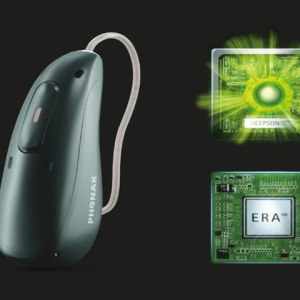
Magic Leap has promised its Mixed Reality headset will ship in “early 2018” – but many experts are doubtful the product can live up to its hype.
Rony Abovitz, CEO of $6bn-valued Magic Leap has announced the release of Magic Leap One, “Lightwear” augmented reality goggles which will visualise 3D objects interacting with the user’s real world. The so-called Creator Edition will be available only to developers and designers.
Product images depict smooth, grey plastic goggles – scarcely larger than chunky sunglasses – with a two-to-three-inch band encircling the user’s head. Unlike VR headsets which encase the viewer’s eyes completely, the Lightwear is semi-transparent so the user can still see through to the real world.

The hardware consists of the sunglasses-sized headset, a CD-Rom-sized “spatial computing platform” which clips to a belt, and a handheld remote control, similar in size to hair clippers. The goggles – which contain a built-in computer – will be available in two sizes, with optional pads for the nose, forehead, and temple. The headgear contains four built-in microphones and six cameras.
Several tech writers have expressed skepticism that the hardware in its depicted size can contain the necessary computing power to deliver the high-definition images promised. The company reserve the right to change the look of the gear from its depiction in publicity images, as stipulated in a tiny line of text on their website: “Product is continually advancing and may be different at time of shipment”.
According to the Magic Leap website, the Magic Leap One GUI consists of “multiple input modes including voice, gesture, head pose and eye tracking” which the company said will create a natural experience of interaction with the tech. The set contains a “high-powered chipset”, an integrated processing unit capable of delivering “gaming-quality graphics” in “intricate detail”. Sound engineering ensures directional audio, while room-mapping technology produces persistent objects which “stay where you put them”.

A Creator Portal is also promised in early 2018, providing access to the SDK, tools, documentation and learning resources to create software for use with the kit. Web developers will be able to create new 3D shopping experiences and allow users to open multiple screens “anytime, anywhere, big or small” with Magic Leap One, the company promises.
Abovitz denied journalists’ requests to disclose specifications of the CPU, GPU, battery life, ship date or price, leading many in the industry to doubt the veracity of the product’s imminent release. R&D images have been steadily released since 2014 – but no products have hit the market to date.
Fake demo sees Magic Leap give a mixed reality about headset launch
Magic Leap’s next-gen virtual reality product nears launch
A Rolling Stone journalist invited to preview the technology was allowed to do so under a non-disclosure agreement regarding the description of any Magic Leap equipment. The headset reportedly creates fantastical vehicles, flora and fauna in and around existing world objects. The product tester witnessed AR visualisations with “substance, volume – not at all a flat image.”
Abovitz said Magic Leap’s AR tech does away with traditional VR research based on the nineteenth century stereoscope. Instead, his company’s research focuses on the dynamic analog light field signal; the brain’s ability to perceive depth and motion within 3D space. The central idea, Abovitz told the Rolling Stone, is to produce a chip which could emit a small “wafer” of the “digital light field signal” into a system engineering model based on the human brain in order to fool a viewer into seeing virtual objects.
Competitor products already on the market include the $3,000 Windows Hololens device and the Dell Mixed Reality headset. HTC Vive and Oculus Rift are considered industry leaders, while cheap VR models are widely available on the high street.






